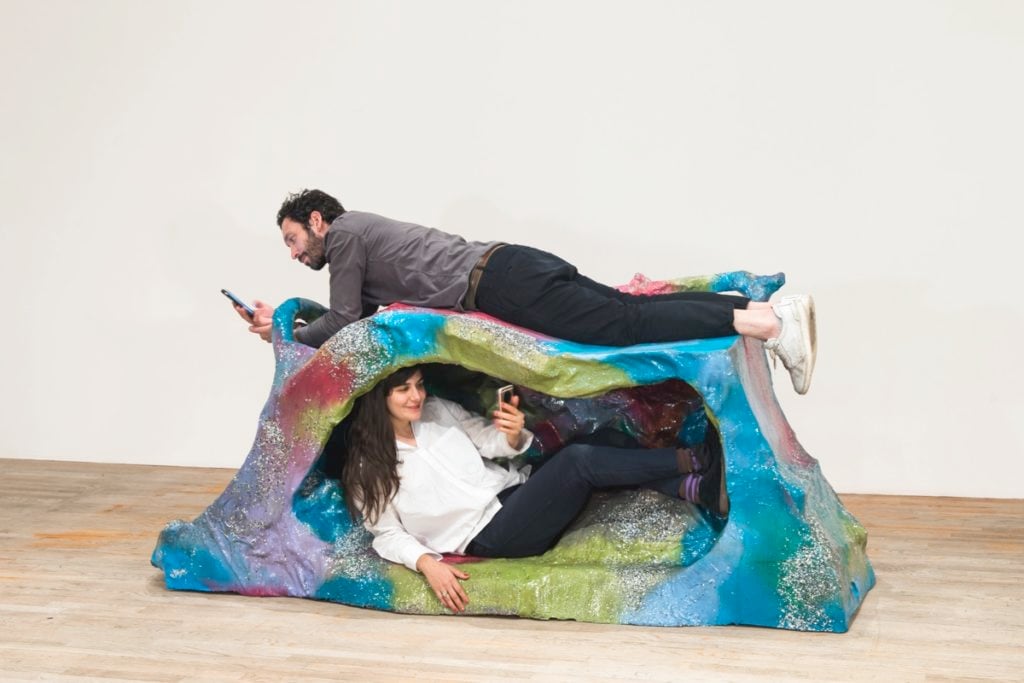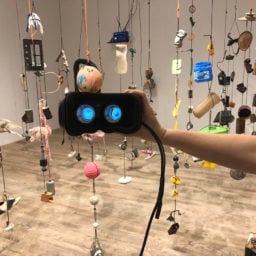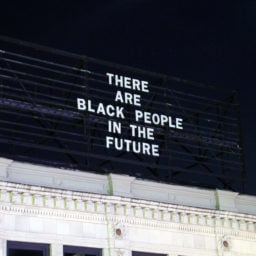Every Monday morning, artnet News brings you The Gray Market. The column decodes important stories from the previous week—and offers unparalleled insight into the inner workings of the art industry in the process.
This week, stories about the size and impact of online audiences…
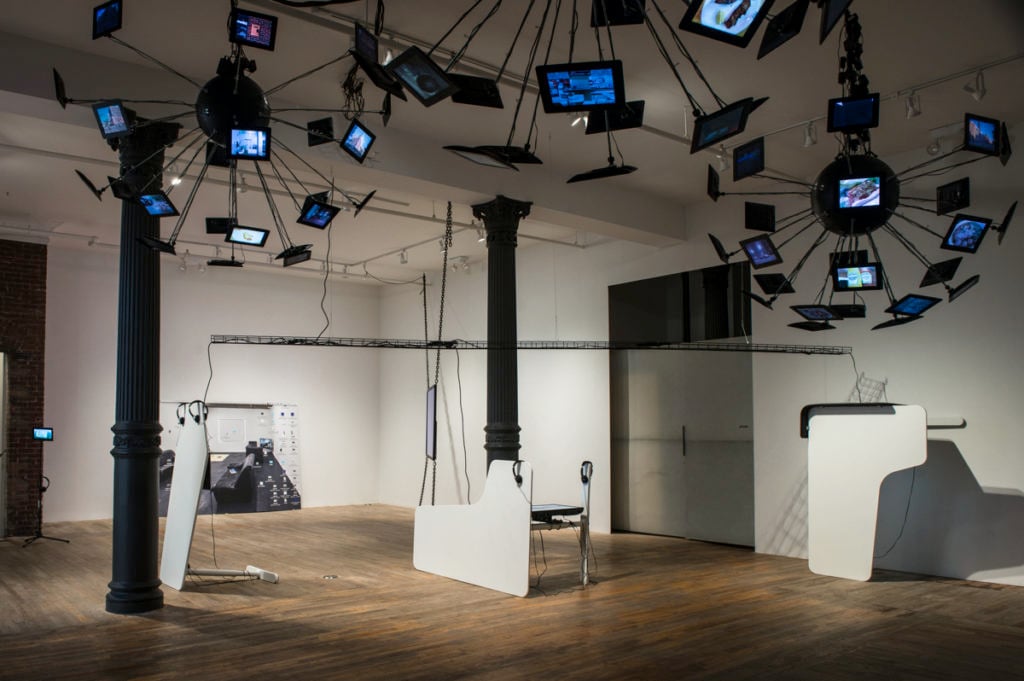
Installation view of “Saved by the Web?” at Postmasters. Courtesy of Postmasters.
POSTMASTERS OF THEIR DOMAIN
Postmasters Gallery announced on Monday that it had joined Patreon, the online platform where everyday fans can provide low-cost monthly funding to creative types ranging from artists to podcasters to musicians. My colleague Eileen Kinsella did some additional reporting to flesh out the what, why, and how of the move.
Postmasters’ page on Patreon includes a manifesto titled “BRING BACK THE BALANCE,” in which co-founders Magda Sawon and Tamas Banovich explain how supplementing their primary-market sales with a subscription model could provide a counterweight to the gallery sector’s increasingly top-heavy, brand-centric, winner-takes-all economics. They see the Patreon campaign as a way to transform Postmasters into “a radical hybrid combining the strength of the market with the support of the community.”
By now, we’ve all seen the social-media and editorial mourning around the closure of respected mid-level galleries. In most cases, the problem is that the average fan—meaning someone who loves to experience art, but doesn’t have the disposable income to buy it regularly—is incapable of doing much of anything to chase the reaper from a beloved space’s front door.
This also helps explain why so many galleries, including many of the most successful ones, tend to treat non-collecting visitors with the same passive aggression that restaurant staff normally reserve for drunk college students who thrash into a booth five minutes before closing time to start endlessly pounding cheap coffee.
Basically: Buy something significant, or GTFO.
Postmasters’ Patreon initiative changes that equation. It provides an opportunity for rank-and-file admirers to actually do something about keeping the gallery open. Potential micro-patrons can choose from five subscription tiers ranging from $3 to $500 monthly, with the associated rewards beginning with inclusion on the gallery’s “patron wall” and topping out at a two-hour “Ask Me Anything”-style meeting every six months.
Notably, none of the rewards are collectible objects, or objects at all. Instead, from subscribers-only podcast episodes to special event invitations, Postmasters is strictly offering incentives born out of a good gallery’s underlying identity: As a gathering place for like-minded people from a variety of backgrounds to connect in a meaningful way over something they’re all passionate about.
This strategy shifts the value proposition toward true believers interested in maintaining a mission rather than buying a souvenir—a clean fit with what Postmasters’ founders are really hoping for. “In the art ecosystem,” they write, galleries “are not shops, nor are they museums. They are by definition local and stationary, and that comes with power to create an active hub and a community around a place.”
In reality, Postmasters’ contention that galleries are “by definition local” may not be strictly true—but in a way that could work to their advantage. From a data set of 224 cultural organizations tracked by IMPACTS, a consulting firm specializing in visitor-serving nonprofits, analyst Colleen Dilenschneider found that “mission-motivated members are more [financially] valuable than transaction-motivated members”—even when they don’t live close enough to visit the organization often.
Among the most “admired” cultural institutions—not the biggest or best-branded—the data showed that non-local members (defined as those living more than 150 miles away) purchase memberships that are roughly 40 percent more expensive than those purchased by patrons living closer by. Non-locals were also 10–17 percent more likely to renew their memberships than members based closer to the organization.
Of course, there are no guarantees that this effect will carry over to a for-profit business like Postmasters. I’ve also been writing for years about how art is a niche medium, not a mass medium, which has made me skeptical of Patreon’s true value in the past.
But the reality is that Postmasters doesn’t need a nation of millions for this campaign to make a difference. The goal on their Patreon page is 2,000 subscribers. (Full disclosure: Ich bin ein Postmaster.) If Postmasters got there, then even if no one paid more than the $3 monthly minimum, the gallery would still pull in around $5,700 every 30 days. (Patreon currently takes a five percent cut of subscription totals.)
That’s way better than a ruined Bernie Madoff client receiving a jar of nickels from a bankruptcy trustee. In fact, it’s better than what Postmasters would net if they sold a $10,000 drawing every month. And since the gallery plans to continue aggressively marketing their artists’ work to collectors, it’s not ridiculous to think that amount could be enough to plug a gap that might otherwise sink the ship.
If not, though, it won’t be because the average fan was powerless to throw them a lifeline. So at the very least, Postmasters deserves credit for intelligently shifting the conversation around midlevel gallery survival. Here’s hoping their peers accept the challenge to think differently, too.
[Postmasters on Patreon | artnet News]

Sotheby’s President and CEO Tad Smith (R) with Katia Nounou (L), Head of Sotheby’s Dubai Office, and H.H Sheikh Nahyan Mabarak Nayhan, Minister of Culture & Knowledge Development. Courtesy of Sotheby’s.
THE SOTHEBY’S REINSTITUTE
Last Sunday, James Pickford of the Financial Times reported that Sotheby’s would once again begin to charge buyer’s premiums in some of its internet-only auctions—just five months after abolishing said fees for all sales conducted entirely online. As of April 1, Sotheby’s has granted its key staff the latitude to decide for themselves whether a given online-only sale should or should not charge buyer’s premiums.
President and CEO Tad Smith cited estate sales as a particularly strong motivator for abandoning what he called the “one-size-fits-all” policy. Since the inventory from major estates is often carved up by price tier and sold in different auctions—some IRL, some online-only—he implies that it would be nonsensical to charge buyer’s premiums on only the items hammered down before a live audience.
Yet Sotheby’s whole reason for abandoning buyer’s premiums for online-only auctions was that those sales had become a feeder system for new clients. By freezing off the extra fees like an ugly birthmark, these auctions and their more consistently entry-level price points would become even more appealing to buyers whose long-term value outweighed their short-term value.
So is it logical to pivot away from this plan just because some online-only auctions originate in estates?
When trying to understand the logic of auction houses, it’s generally wise to think about their costs. As I wrote when Sotheby’s announced the end of buyer’s premiums for online-only sales last year, strictly internet auctions are significantly less expensive to produce than their IRL counterparts.
It isn’t just that the house can essentially automate most of the mechanics of the sale itself, not to mention avoid publishing and shipping out a print catalogue. It’s also that the lower value lots usually featured in online-only auctions seldom require the house to offer consignors a guarantee.
Not so with estate sales. As anyone looted by the traditional funeral industry in a time of grief can tell you, it’s expensive to take care of dead people. Remember, Sotheby’s coughed up a $500 million guarantee for the right to auction the estate of former chairman A. Alfred Taubman in 2015. That’s an outsize example, but an instructional one nevertheless, as the house ultimately took a $12 million loss on the estate.
This is why it makes some sense to charge buyer’s premiums for the online-only portions of estates broken into multiple auctions. The strictly digital sales would be cheap to produce on their own, but they’re part of a larger, costlier construct. Granted, I’m still not sure if selectively reinstituting these fees hurts Sotheby’s more than it helps. But there is brainwork behind the backflip.
[Financial Times]
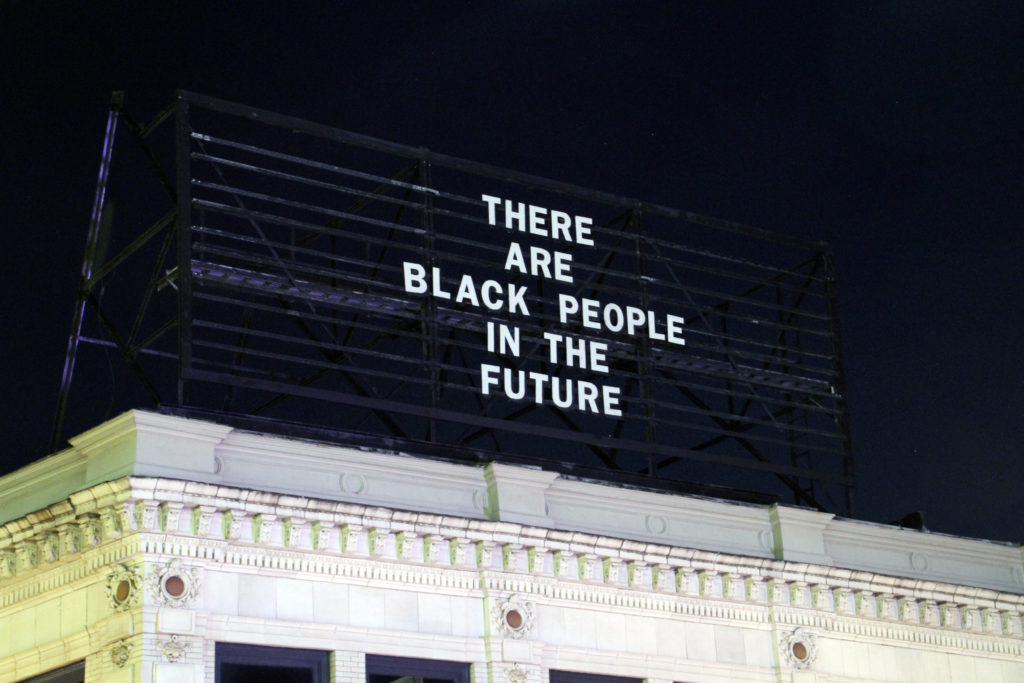
Alisha Wormsley’s contribution to The Last Billboard project in Pittsburgh. Photo courtesy of The Last Billboard project.
BILLBOARD CHARTS
Late last week, my colleague Julia Halperin covered the uproar (and counter-uproar) over multidisciplinary artist Alisha Wormsley’s contribution to a Pittsburgh public art project—a controversy that reinforced the surprising effectiveness of relatively small online arts movements.
Each month, artist, curator, and Carnegie Mellon associate professor Jon Rubin invites a new artist to use old-fashioned wooden lettering to compose a message on the same rooftop signage in Pittsburgh’s (now gentrifying) East Liberty neighborhood.
The Last Billboard, as the project is called, became Wormsley’s canvas in March. But when she used her slot in the program to feature a sentence that has appeared in her work many times before—“There Are Black People in the Future”—all hell broke loose.
Citing inquiries from “a number of people in the local community who said that they found the message offensive and divisive,” landlord Eve Picker of We Do Property ordered Rubin to remove Wormsley’s work three days before its scheduled de-install. She claimed that it ran afoul of a clause in the lease agreement preventing the Last Billboard from hosting “distasteful, offensive, erotic, [or] political” content.
Rubin complied. But on April 4, the day after he posted an online statement in support of Wormsley’s prematurely removed work, “Ms. Picker sent a message to Mr. Rubin… in which she said that her inbox was being flooded by people accusing her of being a racist,” the Pittsburgh Post-Gazette reported.
Then, on April 6, she released a statement saying that the management company had “received a number of emails from people who said they are not offended by the sign and are saddened by its removal.” The statement added that the pro-Wormsley missives “far outnumber” the complaints, and that Rubin could re-install Wormsley’s work effective immediately. Wormsley followed up by releasing her own statement, expressing that she was “deeply saddened” by her piece’s removal but “comforted by how my Pittsburgh has stood up!”
The scale of the response seems to be the story here, although not in the way I expected. East Liberty Development Inc., which admitted to sending an email questioning the tone and meaning of Wormsley’s billboard to both Picker and Rubin, classified what resulted as a “social media firestorm.” But based on what I’ve been able to find by searching around the different platforms, this seems more like a kindling roundup by overall internet standards.
Aside from a blip on the main site’s Afrofuturism subreddit, it doesn’t look like the news penetrated further into the Reddit ecosystem than a contained group of users on Reddit Pittsburgh. I found a few dozen tweets, mostly from Pittsburgh residents, voicing concerns about the saga on April 4 and 5. And the friction on Picker’s Facebook page mostly consisted of the same three people leaving one-line or one-image taunts on her existing posts.
I’m not saying that this backlash couldn’t be annoying and hurtful. Nor can I speak to what was happening in Picker’s inbox, which could have been more unpleasant than sticking your bare hand into a summertime compost bin.
I’m just saying that if you want to see a social media firestorm, you should check out what happened to Starbucks this weekend after a manager in one of their Philadelphia stores called the cops on two African American guys for what Essence magazine (and others) pointedly described as “waiting while black.”
In that sense, this story circles back on the takeaway from Postmasters’ Patreon campaign: The arts are still niche enough that a relatively small coalition can make a world of difference—sometimes, without even leaving the comfort of their laptop. Hopefully that concept gets leveraged for more positive cultural change going forward. Because we certainly know how much damage a few dozen bad actors can cause via the internet, too.
[artnet News]
That’s all for this edition. ‘Til next time, remember: Just because it’s happening online doesn’t mean it isn’t real.
